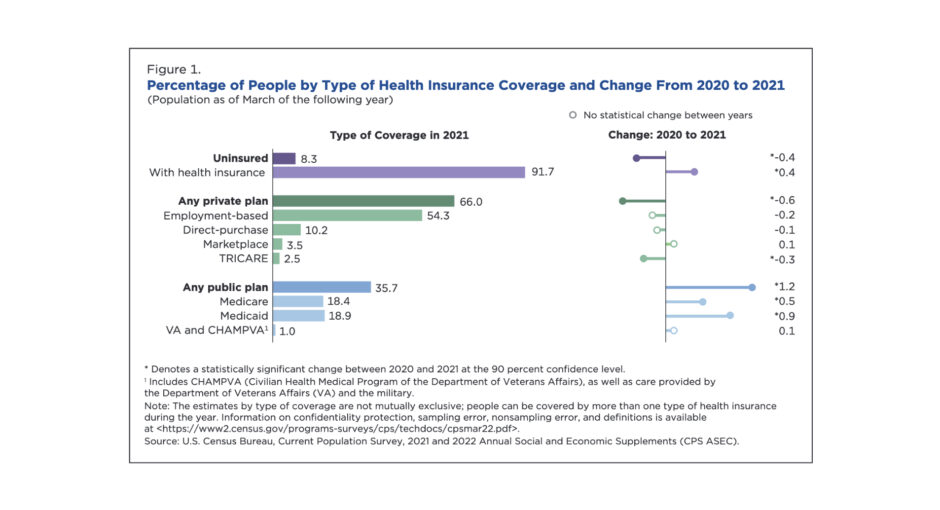About 8.3% of people in the United States, or 27.2 million, had no health insurance at any point during 2021, down from an estimated 8.6%, or 28.3 million, in 2020, the U.S. Census Bureau reported Tuesday.
The National Center for Health Statistics in May also reported a slight decline from 2020 to 2021, but higher rates and numbers than the Census Bureau. NCHS found that the U.S. uninsured rate in 2021 was 9.2%, about 30 million people, down from 9.7%, about 31.6 million people, in 2020.
Other findings from the Census Bureau’s new report:
- In 2021, private health insurance coverage continued to be more prevalent than public coverage, at 66.0% and 35.7%, respectively.
- Of the subtypes of health insurance coverage, employer-based insurance was the most common, covering 54.3 % of the population for some or all of the calendar year, followed by Medicaid (18.9%), Medicare (18.4%), direct-purchase coverage (10.2%), TRICARE (2.5%), and VA and CHAMPVA coverage (1.0%).
- Overall, public coverage increased between 2020 and 2021. In 2021, 35.7% of people held public coverage for some or all of the year, marking a 1.2 percentage-point increase from 2020.
- Between 2020 and 2021, the rate of Medicaid coverage increased by 0.9 percentage points to cover 18.9% of people.
- The uninsured rate among children under the age of 19 decreased 0.6 percentage points to 5.0% between 2020 and 2021, driven in part by an increase in public coverage.
- In 2021, 7.9% of full-time, year-round workers had public health insurance, up 1.8 percentage points from 2020. Among less than full-time, year-round workers, the percentage with public coverage increased 1.6 percentage points to 22.6 % during this period.


